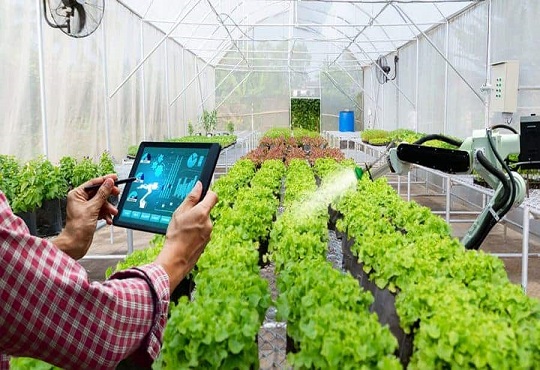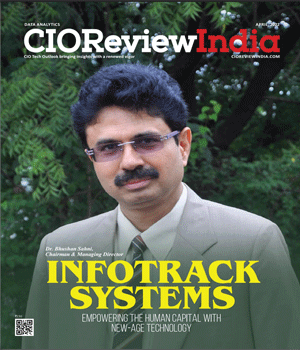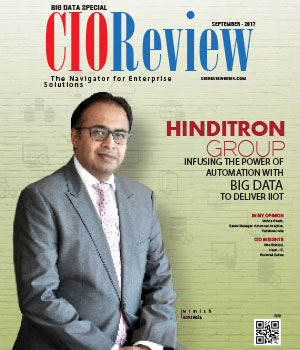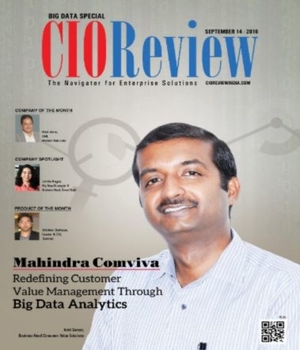
How Data Analytics is Revolutionizing Farming Practices
Janifha Evangeline | Sunday, 23 July 2023, 13:41 IST

One of the biggest industries in the world is agriculture. Farming practices are becoming more and more data-driven as smart tools and sensors proliferate on farms and data volume increases. The market is progressing quickly thanks to the Internet of Things (IoT), cloud computing, and data analytics technologies.
We can now monitor farms, soil, plant activity, and water levels to better understand agricultural systems than ever before thanks to the advent of data analytics technology. We can collect and examine this data using wireless sensors to look for patterns that will help farmers make more informed choices that will boost production and, eventually, result in better-quality product growth. Continue reading to learn how data analytics tools are influencing the future of the agricultural sector.
Bridging the technological gap
The Third Green Revolution, also known as smart farming, is the innovation of the agriculture industry through the application of smart technologies. It promises to bridge the technological gap in the agricultural industry, which has historically relied on more conventional farming techniques, and the newest technological advancements in the coming years.
Data is being used by farmers to estimate crop yields, the need for fertilizer, cost reductions, and even crop optimization tactics. Smart farming creates algorithms that can be used by various farms to produce a crop yield that is both profitable and sustainable by using data analytics tools to gather information from various farming operations. With this information, farmers will be better equipped to anticipate farm activity and use techniques that are both healthier for their crops and more environmentally friendly.
Monitoring and warning systems with predictive analytics
The external factors we have no control over are a substantial danger in farming and agriculture. For instance, pest and crop diseases, as well as natural calamities like storms or extreme weather, can completely destroy harvests. Prior to the development of data analytics tools, it was nearly impossible to foresee such events.
Algorithmic and machine learning techniques can be designed to include a wide variety of outside information or data. Farmers can then use tools for predictive modelling to develop plans or take appropriate action. Think about consumer demand, industry trends, even weather patterns. Thanks to this knowledge, agricultural workers will be better equipped to understand how their surroundings affect their work.
What should they sow? What time is ideal? What earnings should they anticipate? Are supplies getting more expensive? How does this impact revenue? Data analytics tools can be used to find the answers to all of these issues.
Crop Management
Today's farmers can anticipate crop yields with startling accuracy before sowing a single seed by employing powerful computer algorithms to analyze decades, and occasionally centuries, worth of weather and agricultural data. Data analytics' expertise enables farmers to plant and harvest their crops at the ideal times, maximizing agricultural yields and reducing stress.
Farmers can take into account the variations in demand as opposed to filling up a full plot. Farmers may view past production levels, what it meant for consumers, how this affected market dynamics, and how to improve business practices moving ahead. To achieve certain goals, such as conserving money or freeing up space for the growth of alternative crops, they could reduce excess waste by producing less crops for a season with reduced demand.
Automation has achieved astounding new heights as a result of recent developments in drone technology, the internet, and data analytics. Drones equipped with cutting-edge sensors are being used by farmers to examine their crops, update their records, and alert them to areas that require improvement. Drones will likely transition from surveying to planting and harvesting as technology advances.
Weather prediction
Almost all agricultural production is dependent on environmental factors such weather, soil, pests, and climate. Farmers can see the effects that harsh weather conditions and other occurrences can have on their crops with the aid of data analysis for agriculture enterprises. However, the capacity to foresee and respond to these things is far more valuable. With the aid of big data integration and smart farming software, you can quickly react when the weather changes. For instance, information from sensors in the soil and photographs captured by drones can assist farmers in determining anticipated growth rates. A smart system that is aware of what to anticipate is capable of automatically spotting abnormalities or deviations and alerting farmers to them.
Simplified data management through automated reporting, dashboards and analytics
The amount of data available for the many improvement possibilities in agriculture for smart spraying, sowing, and harvesting has significantly expanded thanks to smart, digital, and precision farming. The capacity to use data science in agriculture to extract valuable information from it, however, is what matters most. For a sector with so many variables, insightful metrics in the form of schemas, dashboards, and analytical reports are essential. Although it is a challenging endeavor, it is a realistic goal for technology suppliers to make farming technologies clear and easy for farmers to use.
Agritech dashboards and analytics programs should use data science in agriculture as much as possible to automate and display processes for farmers. Data that has been collected and organized in a backend system can be displayed in an adaptable dashboard with simple-to-use data displays. For instance, it might highlight the status of integrated equipment and present mapping information as well as field and crop data. All specified conditions can be tracked by a configurable dashboard, which can also notify farmers of significant changes. All data acquired by sensors, irrigation equipment, weather forecasts, and other sources may be automatically updated and safeguarded once the dashboard is set up.
The way farmers obtain their yield analytics changes as a result of the usage of big data in agriculture. They can use smartphones to record the development of their crops throughout the course of the growing season. Or they can use robots, drones, and satellites to do it for them. The yield potential can then be calculated using analytical tools in accordance with the weather, past data, and information gathered by farmers. Next, a big data-driven system can generate yield reports automatically to give farmers access to accurate automated calculations. Farmers can plan their steps to enhance crop management and boost yields based on these yield data.
CIO Viewpoint
Accept Data as an Entity on Balance sheet
By Akshey Gupta, Chief Data Officer, Bandhan Bank
Technology Forecast And Concern In 2020
By Anil Kumar Ranjan, Head IT, Macawber Beekay Private Limited
Data Analytics For Enhanced Productivity And...
By Krishnakumar Madhavan, Head IT, KLA
CXO Insights
Regulatory Implications and Data Protection:...
By Richa Singh
Data-Driven Predictive Technologies
By Pankaj Parimal, Head of Launch & Change Management, Hella Automotive Mexico, S.A. de C.V., Mexico, North America.
5 Mantras That Can Drive Organizations Towards...








.jpg)
.jpg)





